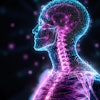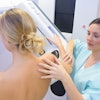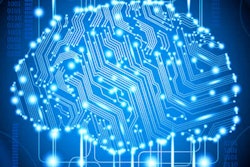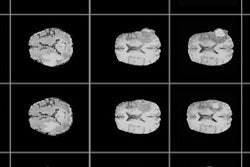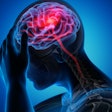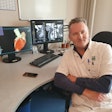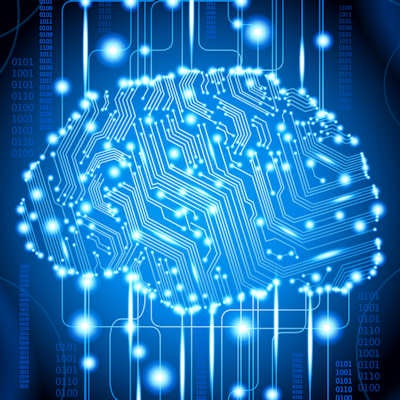
Unlike traditional areas of research that require clinician supervision, investigations of artificial intelligence (AI) imaging are likely to be driven by computer scientists, and this may restrict the input of radiologists and sit uncomfortably with them, according to a commentary published online by European Radiology.
"It remains unclear how we would manage or react to discrepancies between radiologists and AI," noted lead author Dr. Simon Wong, a Foundation Year 2 doctor at Epsom and St. Helier University Hospitals National Health Service (NHS) Trust in the U.K. "Further into the future, autonomous reporting may pose a challenge in gaining acceptance from within the radiology community, let alone other medical specialties."
The recent upsurge of AI in radiology, spearheaded by Silicon Valley, has resulted in collaborations between radiology AI start-ups and multinational corporations, along with dedicated AI discussions at the most prestigious imaging platforms. The consensus view is that the technology has the potential to revolutionize how radiologists work in the 21st century.
"If viable AI comes into use, the radiologist's daily workload will change, though it is difficult to predict whether this change entails a more focused radiologist role or whether fewer radiologists will be required," wrote Wong and colleagues, whose article went live on 18 July. "Uncertainty remains whether AI can even perform to expectations or meet the accountability and regulation necessary to be approved."
On the plus side, radiologists should feel encouraged by their past adaptability to the introductions of MRI and interventional radiology, but AI promises to change the landscape of modern clinical radiology, so it will be necessary to keep up with developments, they continued.
Laying down clear definitions
Wong and colleagues think the best definition of AI is "the capability of a machine to imitate intelligent human behavior," while machine learning concerns "the question of how to construct computer programs that automatically improve with experience." Deep learning is a class of machine learning "concerned with algorithms inspired by the structure and function of the brain."
Deep learning involves feeding computer systems large amounts of existing data to make decisions based on examples. In U.K. healthcare, for example, DeepMind has collaborated with Moorfields Eye Hospital to analyze eye scans for signs of disease resulting in blindness, and the company has joined forces with University College Hospital in London to develop an algorithm to diagnose head and neck cancer on CT and MRI. Also, Israeli-American startup MedyMatch (now called MaxQ-AI) plans to use AI to diagnose stroke on CT and envisages its software being used within the emergency department as well as the radiology reporting room.
An AI system that could reduce the daily workload of the radiology department would be beneficial and keep up with the demands of providing a quality hospital service, and it would be useful if AI could confidently filter out normal plain films and flag up abnormal films for review, according to Wong and colleagues.
"Question-specific AI could be used in CT/MRI, for example in identifying malignancy.
In the early stages, AI would likely be limited to a software tool to be activated by the user," they wrote. "However, in time, with users becoming comfortable working with AI, it may be granted autonomy to report simple scans. It would be likened to an autopilot for doctors and could innovate in the same way."
AI developments in MRI
AI solutions for neuroimaging are being sought, particularly in MRI projects, such as the large-scale Human Connectome project, which aims to map the connectivity of the brain, and another example is the BRAIN initiative, launched by former President Barack Obama, to better understand brain function, they continued. Stroke AI projects have also attracted state funding in the U.S., including a proposed triage role that could enable rapid decision-making.
It is important to acknowledge the media opinions regarding the threat computers pose in taking away the job of the clinical radiologist, and while there are numerous barriers AI will face, it could be a distant possibility, Wong and colleagues noted.
Some observers have suggested a lack of education and awareness of AI is a widespread problem, and because trainees may hold greater concerns about the threat of AI to job security, they are more likely to delve more deeply into this topic, they stated. Also, there is a need for educational resources as AI could enhance training, and responsibility lies with leaders such as universities, national/international societies, and journal editors.
"The technology industry has shown preparedness by driving investment into developing AI. Industry will have to prove firstly that the programs work and secondly that they improve outcomes," the authors wrote. "Predictably, hospitals will be the intended purchasers of radiology AI, some of which may be reluctant to spend money on unproven technology, particularly within publically funded systems such as the NHS."
Uncertainty remains over the degree of processing required to run these advanced programs, and hospitals may not be prepared for additional network requirements.
"Since I wrote this article, my general impression is that there have been more discussions regarding AI in radiology at the highest platforms," Wong wrote in an email to AuntMinnieEurope.com. "I hope my article encourages further conversation."
He is about to start radiology specialty training, and said he has always been interested in new technologies. He is acutely aware of the prospect of AI influencing his chosen career, and while he has no personal experience of AI in the workplace, he is a frequent consumer of everyday AI, including smartphones, ridesharing apps, and social networks.
